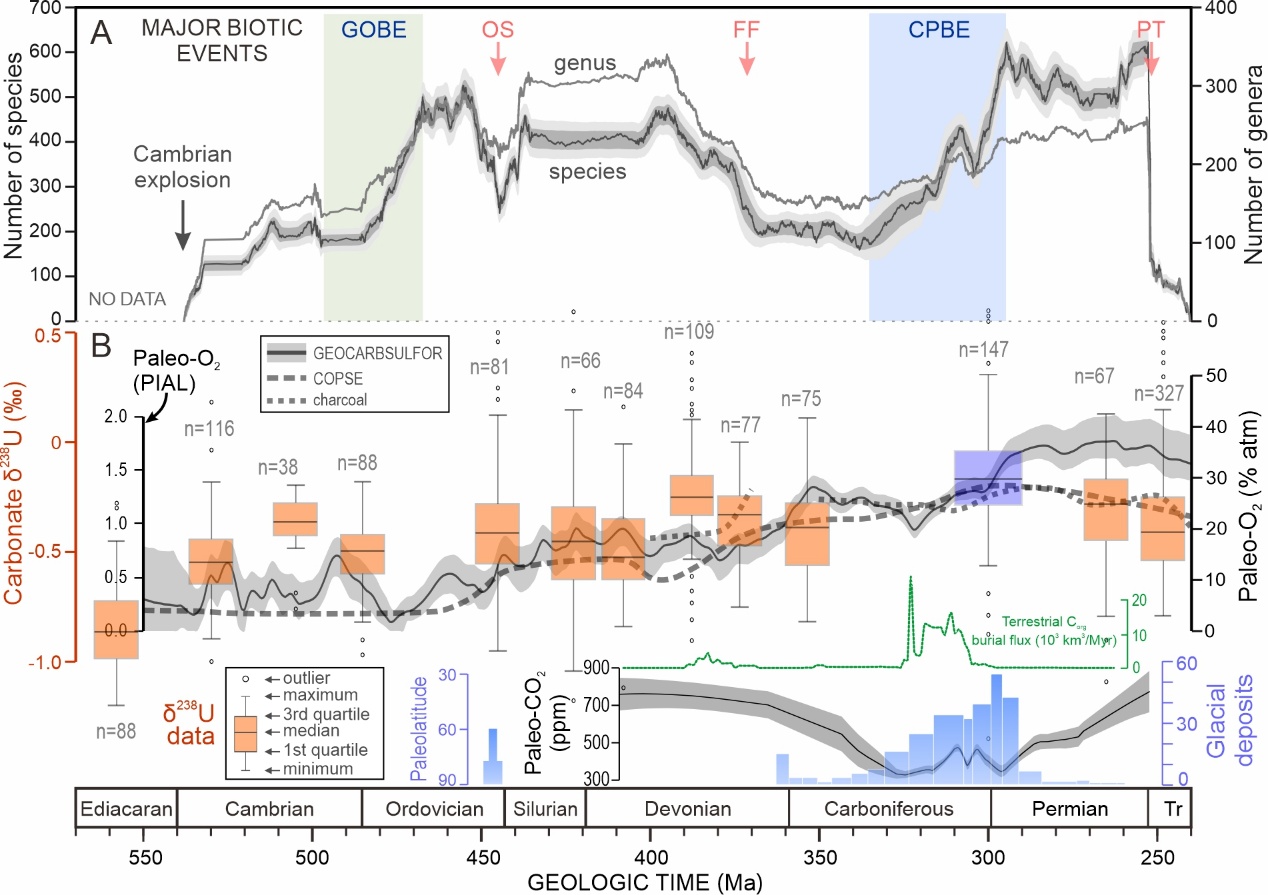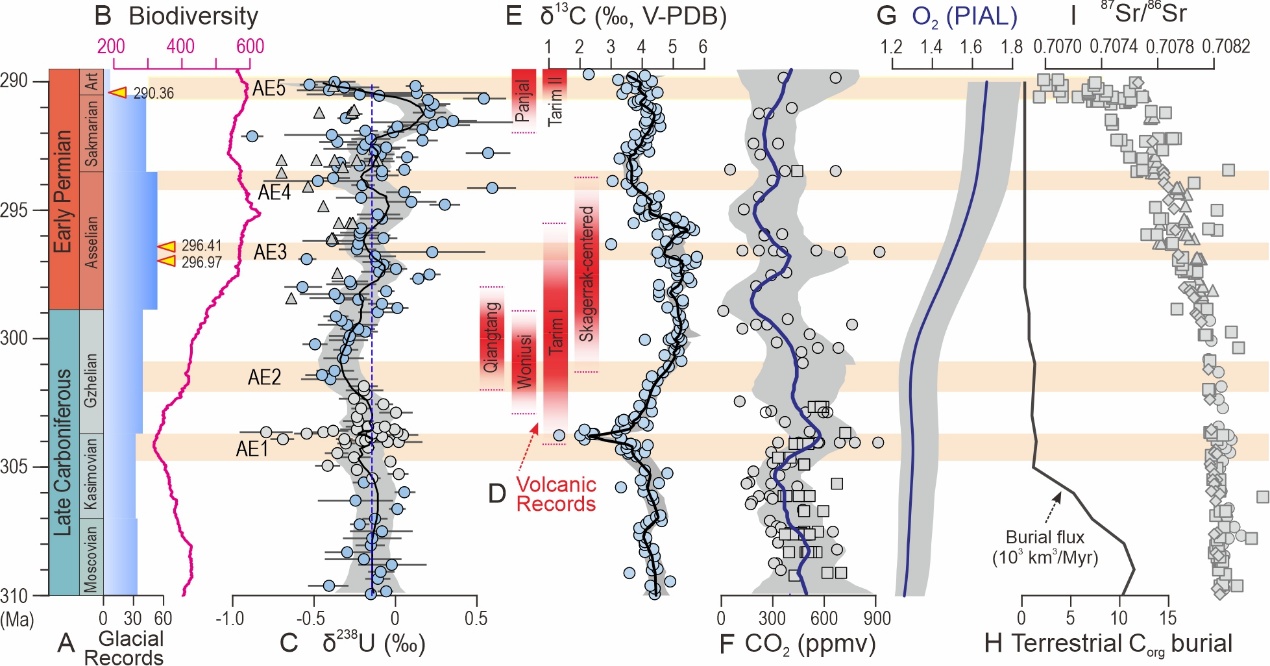Earth's current climate is considered an "icehouse climate" due to the existence of polar ice caps. This is important because previous icehouse climates can better predict how atmospheric oxygen and carbon dioxide (CO2) levels today may affect the risk of marine anoxia and subsequent marine biodiversity loss in the future.
To understand the interplay among atmospheric oxygen and CO2 levels and oxygenation conditions in the ocean during an earlier icehouse climate, an international team led by Prof. CHEN Jitao from the Nanjing Institute of Geology and Palaeontology of the Chinese Academy of Sciences studied ancient sedimentary rocks in Naqing, South China, to analyze their chemical compositions.
Specifically, the researchers derived high temporal-resolution records of carbonate uranium isotopes from a marine carbonate slope succession dating from the late Carboniferous to early Permian (310-290 million years ago). This geologic epoch is part of the Late Paleozoic Ice Age (LPIA) (360-260 million years ago), which is recognized as the longest icehouse climate since advanced plants and terrestrial ecosystems appeared.
By combining these records with previously published carbonate carbon isotopes, paleo-CO2 data, and records of volcanic activity and plant evolution, the researchers quantitatively explored, through biogeochemical modeling, the global carbon cycle and marine oxygen conditions for this geological period. This work was published in the Proceedings of the National Academy of Sciences of the United States of America (PNAS).
The study revealed rapid drops in levels of carbonate uranium isotopes, which occurred alongside rapid increases in atmospheric CO2 levels. This suggests that seafloor anoxia expanded even during the Phanerozoic maximum of atmospheric oxygen and the glacial peak of the LPIA.
Using a carbon-phosphorus-uranium (C-P-U) biogeochemical model coupled with Bayesian inversion, the researchers quantitatively examined the interactions among marine anoxia, carbon cycling, and climate evolution during this paleo-glacial period. Model results indicated that enhanced burial of marine organic carbon likely drove the overall decline in atmospheric CO2 and the rise in oxygen levels in the atmosphere-ocean system throughout this interval. However, despite these high oxygen levels, episodic massive carbon emissions could have triggered recurrent global warming and seafloor deoxygenation.
Furthermore, the team's model showed an increase of 4-12% in the extent of the anoxic seafloor, which could have led to a pause or decline in marine biodiversity. This study emphasizes that under current icehouse conditions, which mirror the high-oxygen state of the LPIA, ongoing warming may still provoke widespread ocean anoxia.
This study advances our understanding of the processes and feedback mechanisms within the Earth system during icehouse conditions, enabling more accurate projections of the future trajectory of current global warming and marine deoxygenation.

Paleozoic marine biodiversity, atmospheric composition, and seafloor oxygenation history. (Image by Prof. CHEN Jitao's team)

Geochemical, geologic, and biotic records for the late Carboniferous to early Permian, showing repeated occurrences of anoxic events (AE1-5). (Image by Prof. CHEN Jitao's team)






